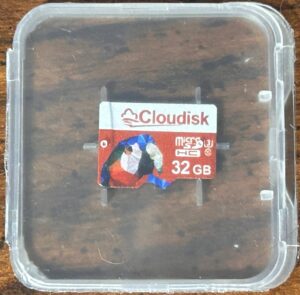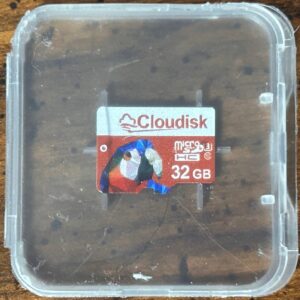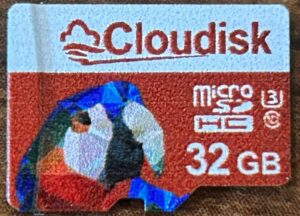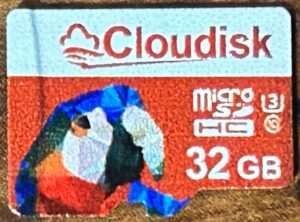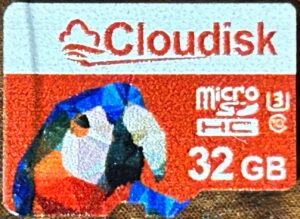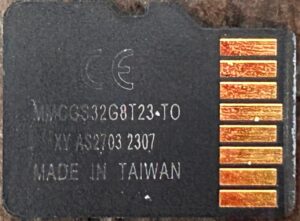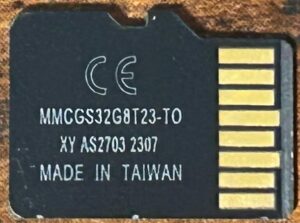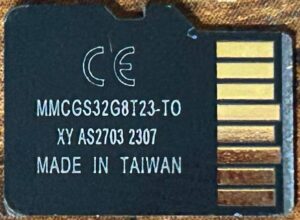- Obtained from: AliExpress
- Price paid: $3.52
- Advertised capacity: 32GB
- Logical capacity: 31,457,280,000 bytes
- Physical capacity: 31,457,280,000 bytes
- Fake/skimpy flash: Skimpy (1.70% skimp)
- Protected area: 83,886,080 bytes (inaccessible)
- Speed class markings: Class 10, U1, A1
- CID data:
- Manufacturer ID:
0xfe - OEM ID:
0x3432(ASCII:42) - Product name:
0x5344313647(ASCII:SD16G) - Product revision:
0x20 - Manufacture date: Jul 2023
- Manufacturer ID:
Discussion
This card was unusual in the fact that it did not come in a retail package — instead, it came in a simple plastic case.
All three samples performed well enough on the performance tests to qualify for the Class 10 and U1 markings; however, none of them performed well enough to qualify for the A1 marking. As we’ve established previously, my tests don’t conform to the tests described in the SD Physical Layer Specification — so maybe these cards would have performed better under the right conditions…but somehow I doubt it (especially seeing as how I have other cards that did perform well enough to qualify for the A1 marking).
On the endurance front:
Sample #1 did make it past the 2,000 read/write cycle mark without encountering any errors — but just barely. Its track record was pretty boring — but here it is:
Like I said, it’s pretty boring: nothing happens until round 2,077 — where barely anything happens — and then nothing happens for another 100 rounds or so before the card becomes unresponsive.
Sample #2 encountered its first error after 1,516 read/write cycles. I finally declared it dead at the end of round 2,279, when the number of bad sectors reached the 50% threshold. Here’s what its progress graph looked like:
Sample #3 experienced its first error during round 876. I don’t know the nature of the error, but it affected over 5% of the sectors on the device in one round — but by the next round, those same sectors did not experience any errors. It continued to experience data verification failures over the next 2,700 or so read/write cycles; it was finally declared “dead” once 50% of the sectors on the card had experience data verification failures. Here’s what the graph of this sample’s progression looked like:
My conclusion: eh. These weren’t the worst performers in my collection, but it sure seemed like they were for a while. There are better options out there for the money.
July 5, 2024


